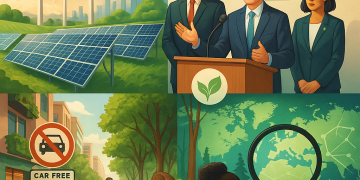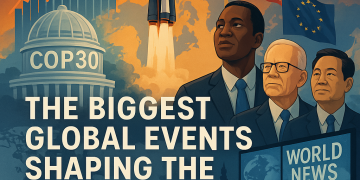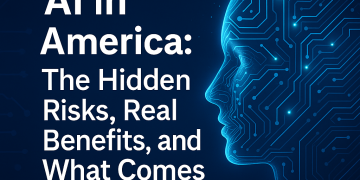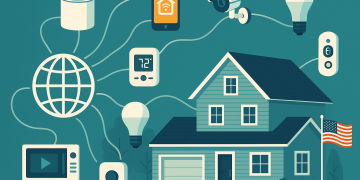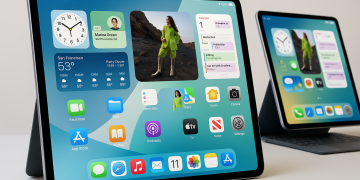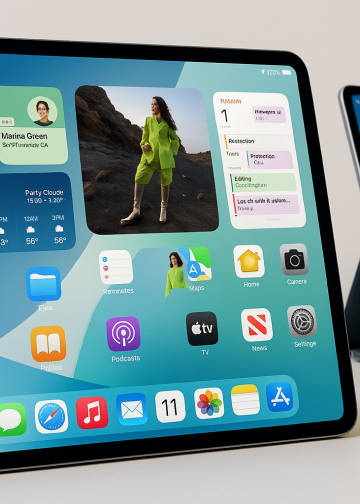Introduction: Climate Change in the USA—A Defining Challenge of Our Time
Climate change is no longer a distant warning—it’s a reality shaping lives, economies, and ecosystems across the United States. From intensifying wildfires in California to rising sea levels threatening Florida’s coasts, the climate change USA story is one of both risk and resilience. As the evidence mounts and headlines shift from warnings to real-time events, American climate research and environmental science are at the forefront of understanding and responding to these rapid changes.
What are the most pressing global warming effects in the United States? How are American scientists, policymakers, and communities responding? This article provides an up-to-date look at the latest science news, scientific perspectives, and actionable insights on one of the greatest challenges facing our country.
1. The Science Behind Climate Change: What Every American Should Know
The Greenhouse Effect
At its core, climate change is driven by the buildup of greenhouse gases—primarily carbon dioxide (CO₂), methane (CH₄), and nitrous oxide (N₂O)—in the atmosphere. These gases trap heat from the sun, warming the planet in a process known as the greenhouse effect. Since the Industrial Revolution, human activities such as burning fossil fuels, deforestation, and agriculture have dramatically increased these emissions.
The Warming Trend
According to the National Oceanic and Atmospheric Administration (NOAA), the USA has warmed by more than 2°F (about 1.1°C) since the late 19th century. Each decade since the 1980s has been warmer than the one before it—a clear sign that climate change is accelerating.
2. Global Warming Effects Across the United States
a. Extreme Weather Events
Hurricanes and Floods
Recent years have seen a surge in powerful hurricanes, from Hurricane Harvey in Texas to Hurricane Ian in Florida. Warmer ocean waters fuel stronger storms, while rising sea levels worsen coastal flooding.
Wildfires
California, Oregon, and the American West have suffered record-breaking wildfire seasons. Drought, heat, and earlier snowmelt extend the fire season, turning once-rare “megafires” into regular threats.
Droughts and Water Scarcity
The Southwest is experiencing its worst “megadrought” in over a thousand years, impacting agriculture, drinking water supplies, and hydropower production.
Heatwaves
Major cities from Phoenix to New York are breaking heat records. Prolonged high temperatures threaten health, stress power grids, and increase cooling costs.
b. Rising Sea Levels
Nearly 40% of Americans live in coastal counties. Satellite data shows U.S. sea levels have risen by about 9 inches since 1880—and the pace is accelerating. Miami, New Orleans, and Charleston regularly face “sunny day” flooding, and entire communities in Alaska and Louisiana are relocating due to erosion and inundation.
c. Disappearing Snow and Ice
The American West relies on winter snowpack to supply water through the summer. Shorter, warmer winters mean less snow, more rapid melting, and increased wildfire risk.
d. Changing Ecosystems
Iconic species like the American pika and monarch butterfly are struggling to adapt. Forests are shifting northward, and fisheries in New England and Alaska face disruption as ocean temperatures climb.
3. American Climate Research: Tracking and Understanding the Changes
Leading Institutions
The United States leads the world in environmental science through organizations such as:
- National Aeronautics and Space Administration (NASA)
- NOAA
- United States Geological Survey (USGS)
- National Center for Atmospheric Research (NCAR)
- Major universities and climate labs
Satellites and Supercomputers
American satellites monitor Earth’s climate, tracking temperature, ice melt, sea level, and atmospheric gases. Supercomputers simulate future climate scenarios, helping scientists predict everything from hurricane paths to heatwave trends.
Citizen Science and Data
Initiatives like the Community Collaborative Rain, Hail, and Snow Network (CoCoRaHS) and iNaturalist enable ordinary Americans to contribute observations, making climate data richer and more locally relevant.
4. Health Impacts: How Climate Change Affects Americans
Heat-Related Illness
Heatwaves are the deadliest natural disaster in the USA, causing thousands of hospitalizations and deaths annually—particularly among vulnerable populations like the elderly, children, and outdoor workers.
Respiratory Problems
Wildfire smoke and ozone pollution increase asthma, bronchitis, and other lung conditions. Urban areas face more “bad air days” due to increased temperatures and vehicle emissions.
Vector-Borne Diseases
Warming temperatures expand the habitat for ticks and mosquitoes, increasing the risk of diseases such as Lyme, West Nile, and Zika.
Mental Health
Extreme weather, displacement, and climate anxiety contribute to stress, trauma, and depression—especially in communities hit hardest by disasters.
5. Economic and Social Impacts
Agriculture
Farmers are adapting to shifting planting zones, unpredictable rainfall, and new pests. Drought and heat can devastate crops like corn, wheat, and soybeans—core pillars of the American food system.
Infrastructure
Roads, bridges, and power grids are threatened by flooding, heat, and storms. Billions are spent annually on repairs and upgrades.
Insurance and Real Estate
Coastal and wildfire-prone properties are becoming harder to insure, and some markets are seeing declining property values as risk increases.
Migration and Inequality
Communities—especially in low-lying coastal and rural regions—are facing “climate migration.” Vulnerable populations, including minorities and the poor, often bear the brunt of the impacts.
6. Solutions and Adaptation: What Is Being Done?
Federal Initiatives
Recent policy actions include the Inflation Reduction Act (2022), which directs historic funding toward clean energy, emissions reductions, and climate resilience.
NASA, NOAA, and the EPA run major research and public awareness campaigns, fund climate adaptation efforts, and work to improve forecasting and early warning systems.
State and Local Leadership
States like California and New York have aggressive renewable energy and emissions goals. Cities from Seattle to Miami are investing in flood barriers, green roofs, and urban tree planting.
Private Sector Innovation
Eco-friendly companies and startups are developing technologies from electric vehicles to sustainable agriculture and green building materials.
Community Action
From indigenous land stewardship to citizen science projects, local efforts play a crucial role in building resilience and driving change.
7. The Role of Environmental Science and Technology
Renewable Energy
Solar and wind power now provide over 20% of U.S. electricity, and battery storage technology is advancing rapidly. The transition away from coal and oil is central to climate strategy.
Carbon Capture
New plants are capturing and storing CO₂ emissions from power plants and factories. American companies are also developing methods to remove carbon directly from the air.
Smart Agriculture
Precision irrigation, drought-resistant crops, and regenerative farming practices are helping American farmers adapt while reducing emissions.
Advanced Forecasting
AI and high-performance computing are enabling more accurate forecasts of extreme weather, helping communities prepare and respond.
8. Table: Examples of Climate Change Impacts and Adaptation Strategies Across the USA
| Region | Climate Impact | Adaptation Example |
|---|---|---|
| California | Wildfires, drought | Forest management, water restrictions |
| Florida | Sea level rise, hurricanes | Flood barriers, home elevation |
| Midwest | Heatwaves, changing rainfall | Crop diversification, soil conservation |
| Alaska | Melting permafrost, coastal erosion | Village relocation, new infrastructure |
| Northeast | More intense storms | Upgraded power grids, coastal buffers |
9. Latest Science News: American Climate Research Breakthroughs
- Record heat in 2023–2024: NOAA confirmed that 2023 was the hottest year on record for the U.S., with unprecedented marine heatwaves in the Atlantic and Pacific.
- Atmospheric rivers: Scientists are developing new warning systems for “atmospheric rivers,” massive streams of moisture that cause major flooding in the West.
- Carbon-neutral aviation: American companies and NASA are piloting sustainable fuels and electric airplanes to cut emissions from air travel.
- Climate-resilient cities: Urban researchers are designing cities that can better withstand heat, flooding, and other climate stresses—integrating parks, cooling centers, and green spaces.
10. What Can Americans Do? Personal and Community Actions
- Reduce energy use: Switch to LED bulbs, use public transport, weatherize homes.
- Support clean energy: Choose green power from utilities, invest in solar panels.
- Eat sustainably: Reduce food waste, buy local, try plant-based meals.
- Vote and advocate: Support policies and leaders focused on climate solutions.
- Get involved: Join local environmental groups or citizen science projects.
Conclusion: Facing Climate Change—Science, Solutions, and Hope
Climate change is already reshaping the United States, touching every community in ways big and small. But with world-class American climate research, a robust environmental science sector, and growing public engagement, there is real hope for a more resilient, sustainable future. By staying informed, supporting science, and taking action—from the halls of Congress to our own neighborhoods—we can turn the tide on climate change USA and protect what matters most for generations to come.


